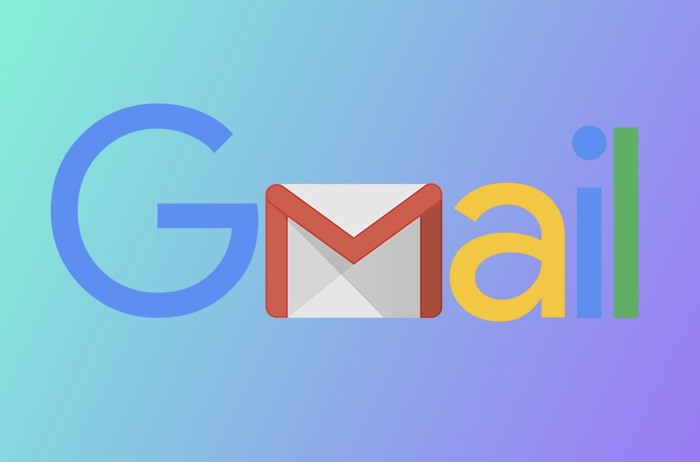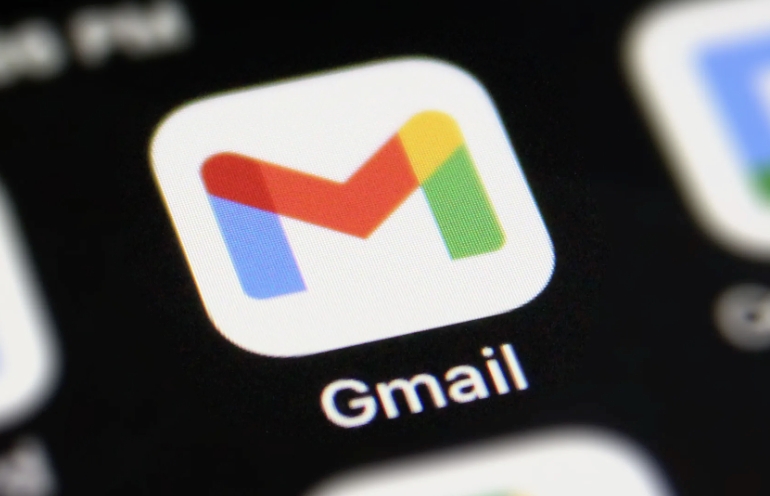To add a contact in Gmail, open an email, click the plus sign next to the sender’s name or email, select “Add to Contacts,” edit details if needed, and click “Save.” 1. On desktop, hover over the sender’s name/email in the “From” field, click the plus icon, choose “Add to Contacts,” edit, and save. 2. On mobile, open the email, tap the sender’s name/email, select “Add to contacts,” choose new or existing contact, add details, and tap “Save.” 3. Contacts can also be created manually via Google Contacts on desktop or mobile. 4. Sync contacts with other services like Google Calendar or third-party apps by adjusting settings in Google Contacts or device settings. 5. To edit a contact later, go to Google Contacts, select the contact, make changes, and click “Save,” or merge duplicates and organize into groups for better management.

Adding a contact in Gmail is something most people do without thinking, but if you're new to it or just want a quick refresher, here's how to do it smoothly. The process works slightly differently depending on whether you're using a desktop or mobile device, but the core steps are pretty much the same.

How to Add a Contact from an Email on Desktop
This is probably the most common way people add contacts — especially when they receive an email and want to save that person’s info for future reference.
Here’s what you do:

- Open the email from the sender you want to add.
- Hover your mouse over their name or email address in the "From" field — a small icon (usually a plus sign) should appear next to it.
- Click that icon and select “Add to Contacts”.
- You’ll be taken to the contact creation screen where you can edit details like first name, last name, job title, etc.
- Once done, click “Save” at the bottom.
You can also manually create a contact by going to Google Contacts, clicking Create Contact, and filling in the fields.
Adding a Contact on Mobile (Android or iOS)
If you’re on the go and want to save someone’s email quickly, adding a contact through the Gmail app is straightforward.

Steps:
- Open the Gmail app and tap on an email from the sender.
- Tap the sender’s name/email at the top of the message.
- In the pop-up that appears, tap “Add to contacts”.
- Choose whether to create a new contact or add to an existing one.
- Fill in any additional info if needed, then tap “Save”.
You can also open the Google Contacts app directly and create a contact manually, similar to the desktop version.
Syncing Contacts with Other Services
One thing many users don’t realize is that Gmail contacts can sync across other Google services and even third-party apps.
For example:
- Your saved contacts will automatically show up in Google Calendar when you invite someone.
- If you use a third-party email client like Outlook or Thunderbird, make sure to enable contact syncing so you can still autocomplete names when sending emails.
- On mobile devices, you can choose whether to sync contacts with your phone’s native address book, which makes calling or texting easier.
To manage sync settings:
- Go to Google Contacts > Settings > Linked accounts
- Or check your device settings under “Accounts & Sync”
Managing and Editing Contacts Later
Once you’ve added a contact, you might need to update their info later — maybe they changed jobs or got a new number.
To edit a contact:
- Go to Google Contacts
- Find the contact and click their name
- Make changes, then click “Save”
You can also merge duplicates or organize contacts into groups for easier management.
That’s basically how you add and manage contacts in Gmail — not complicated, but definitely handy once you get used to it.
The above is the detailed content of How to add a contact to Gmail. For more information, please follow other related articles on the PHP Chinese website!

Hot AI Tools

Undress AI Tool
Undress images for free

Undresser.AI Undress
AI-powered app for creating realistic nude photos

AI Clothes Remover
Online AI tool for removing clothes from photos.

Clothoff.io
AI clothes remover

Video Face Swap
Swap faces in any video effortlessly with our completely free AI face swap tool!

Hot Article

Hot Tools

Notepad++7.3.1
Easy-to-use and free code editor

SublimeText3 Chinese version
Chinese version, very easy to use

Zend Studio 13.0.1
Powerful PHP integrated development environment

Dreamweaver CS6
Visual web development tools

SublimeText3 Mac version
God-level code editing software (SublimeText3)
 How to create a custom brush in Photoshop
Jul 08, 2025 am 01:01 AM
How to create a custom brush in Photoshop
Jul 08, 2025 am 01:01 AM
The steps to create a custom brush in Photoshop are as follows: 1. Select a pattern with clear edges and suitable for brushes, such as hand-painted textures or photo parts, and adjust it to the appropriate size; 2. Use the "Magic Wand Tool" or "Quick Selection Tool" to remove the background to ensure that the pattern is in an independent selection; 3. Create a basic brush through "Edit > Define Brush Presets"; 4. Adjust the parameters such as "Shape Dynamic", "Scatter", "Text" and "Transfer" in the "Brush" panel to make the strokes more natural; 5. Finally, click "Save As Brush" to save as a .abr file for convenience of subsequent use and sharing.
 How to use the quick selection tool in Photoshop
Jul 06, 2025 am 12:01 AM
How to use the quick selection tool in Photoshop
Jul 06, 2025 am 12:01 AM
Photoshop's quick selection tool is suitable for selecting areas with similar colors and clear boundaries. The usage methods include: 1. Find and activate the tool, right-click or long-press to switch or press the shortcut key W to ensure that the layer is unlocked; 2. Adjust the brush size, combine the Alt or Option key to switch the selection mode, Shift key to add selection, and improve accuracy through the option bar setting sampling method; 3. Use the "Select the Subject" function to assist in selection, and then manually optimize edge details, especially suitable for portraits or product images.
 How to recover a corrupted AutoCAD file?
Jul 09, 2025 am 01:16 AM
How to recover a corrupted AutoCAD file?
Jul 09, 2025 am 01:16 AM
When AutoCAD file is corrupted, you can take the following steps to try to restore: 1. Check the automatic backup of the file, check whether there is a .bak or .sv$ file in the folder where the original .dwg file is located, and rename the .bak file to .dwg to open it; 2. Use the RECOVER command to try to repair the file, and if it fails, use the -OPEN command to open the file for partial recovery; 3. Use third-party tools such as DataNumenDWGRepair, RecoveryToolboxforDWG, etc. to deal with seriously damaged files. To prevent future damage, you should save regularly and use "Save As" to refresh the file structure, keep the software updated, avoid saving through network drives, enable automatic save and set up
 How to fix remote desktop connection issues
Jul 08, 2025 am 01:03 AM
How to fix remote desktop connection issues
Jul 08, 2025 am 01:03 AM
Remote Desktop connection problems can be checked through the following steps: 1. Check the network and firewall settings to ensure that the TCP3389 port is open; 2. Confirm that the remote desktop function is enabled and supported by non-home version systems; 3. Verify user permissions and belong to the "RemoteDesktopUsers" group or administrator; 4. Handle black screen or lag, adjust the display options or restart the remote computer. Check them one by one in order, and most problems can be solved.
 How to remove password protection from a PDF in Adobe Acrobat?
Jul 05, 2025 am 12:36 AM
How to remove password protection from a PDF in Adobe Acrobat?
Jul 05, 2025 am 12:36 AM
To remove PDF password protection, use Adobe AcrobatPro and have the document owner password. The steps include: 1. Open Adobe AcrobatPro and select a password-protected PDF file; 2. Enter the correct owner password; 3. Go to "Tools" > "Protection" > "Encryption" > "Remove Security"; 4. Click "OK" in the pop-up window to confirm the removal. If AcrobatPro is not available, you can ask others for assistance or use third-party decryption tools, but you need to pay attention to privacy risks. Common problems include invalid password, grayed out security settings, and prompting for passwords after removal. The solution is to check password input, try to convert file formats, or update software versions. If it cannot be resolved, please contact A
 How to get Photoshop for free
Jul 12, 2025 am 12:34 AM
How to get Photoshop for free
Jul 12, 2025 am 12:34 AM
Adobe Photoshop does not have a permanent free version, but can be legally used in the following ways: 1. The official website provides a 7-day free trial, complete functions but automatic renewal is required; 2. Use a simplified version based on the browser (Beta), which supports basic editing functions; 3. Students or teachers can obtain a full-featured version through the school education plan; 4. Consider alternative software such as GIMP, Photopea, Krita or Canva Pixlr to meet daily needs. The above methods can meet the needs of different users and ensure legal and compliant use.
 AutoCAD 3D modeling tutorial
Jul 10, 2025 pm 12:20 PM
AutoCAD 3D modeling tutorial
Jul 10, 2025 pm 12:20 PM
Friends who are just beginning to get involved in AutoCAD3D modeling can start with the following steps: 1. Start practicing from basic geometry (such as cubes, cylinders, spheres), use BOX, CYLINDER, SPHERE and other commands to build simple models and combine them into complex structures; 2. Master Boolean operations (UNION merge, SUBTRACT cutting, INTERSECT intersection) to create solid models with holes or combined structures; 3. Pay attention to the settings of the view and coordinate system (UCS), switch the view angle to understand the structure, and ensure the correct operation direction by adjusting UCS; 4. After completing the modeling, it can be exported to STL, STEP or IGES format for easy printing or sharing, and use SECTIONPLANE







